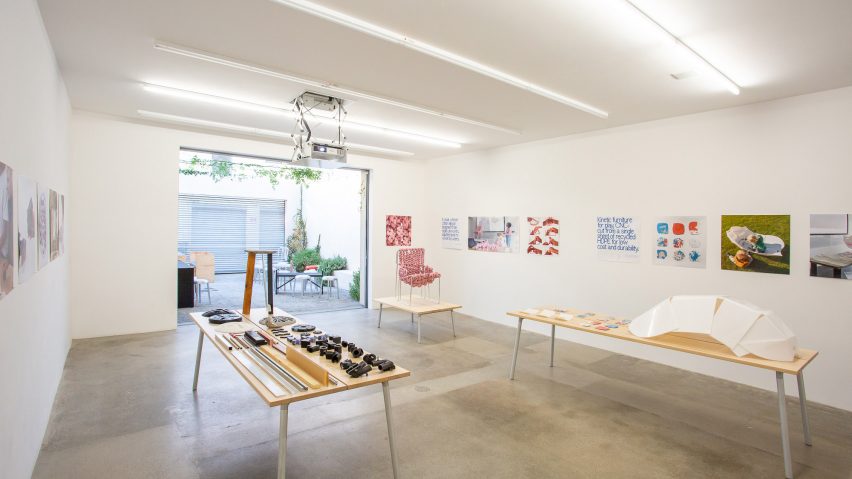
MIT students develop concepts for "the next 150-year chair"
A chair that can adapt over time and one fabricated with 3D-printed liquid metal are among the designs that students at MIT came up with for The Next 150-year Chair exhibition in collaboration with furniture brand Emeco.
In total five pieces were created for the exhibition, which was a collaboration between American furniture company Emeco and the Massachusetts Institute of Technology (MIT) to conceptualise sustainable furniture pieces.
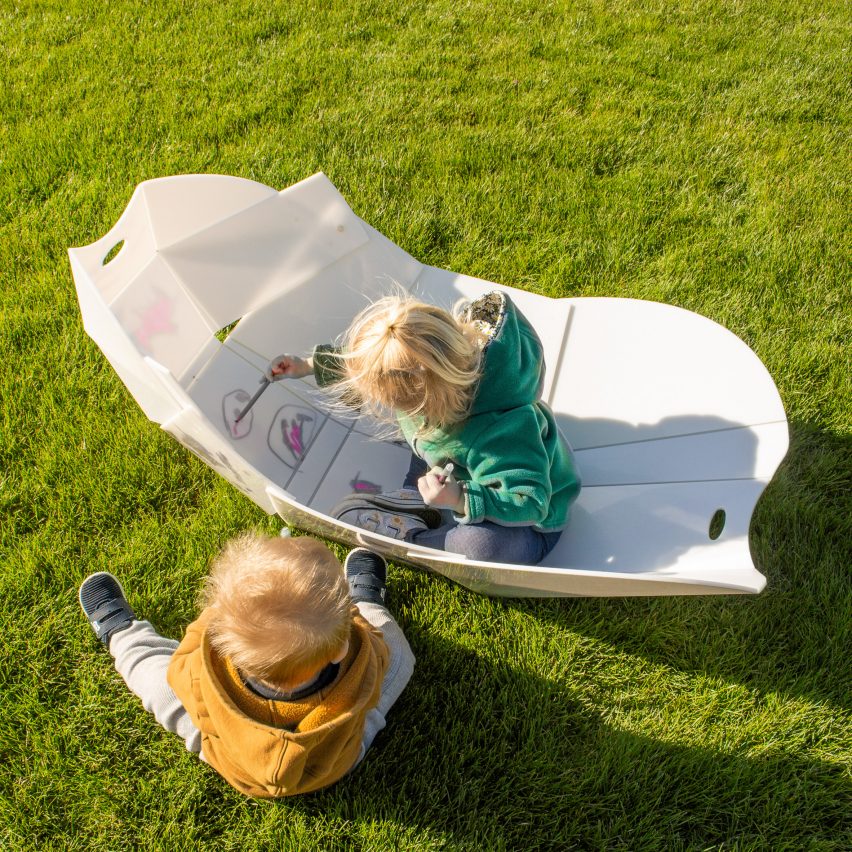
Called The Next 150-year Chair, the project was carried out via a course at MIT that guided students through a design process with access to Emeco's manufacturing technology.
The prompt was based on Emeco's 1006 Navy chair developed in 1944, which has a "150-year lifespan" according to the company.
"Today, a 150-year chair means making something that lasts a long time, which is a great thing to do," said MIT associate professor Skylar Tibbits. "But the question is whether that will be the same for the next 150 years – should the goal still be to make things that last forever?"
"That's one approach, but maybe there's something that could be infinitely recyclable instead or something that's modular and reconfigurable."
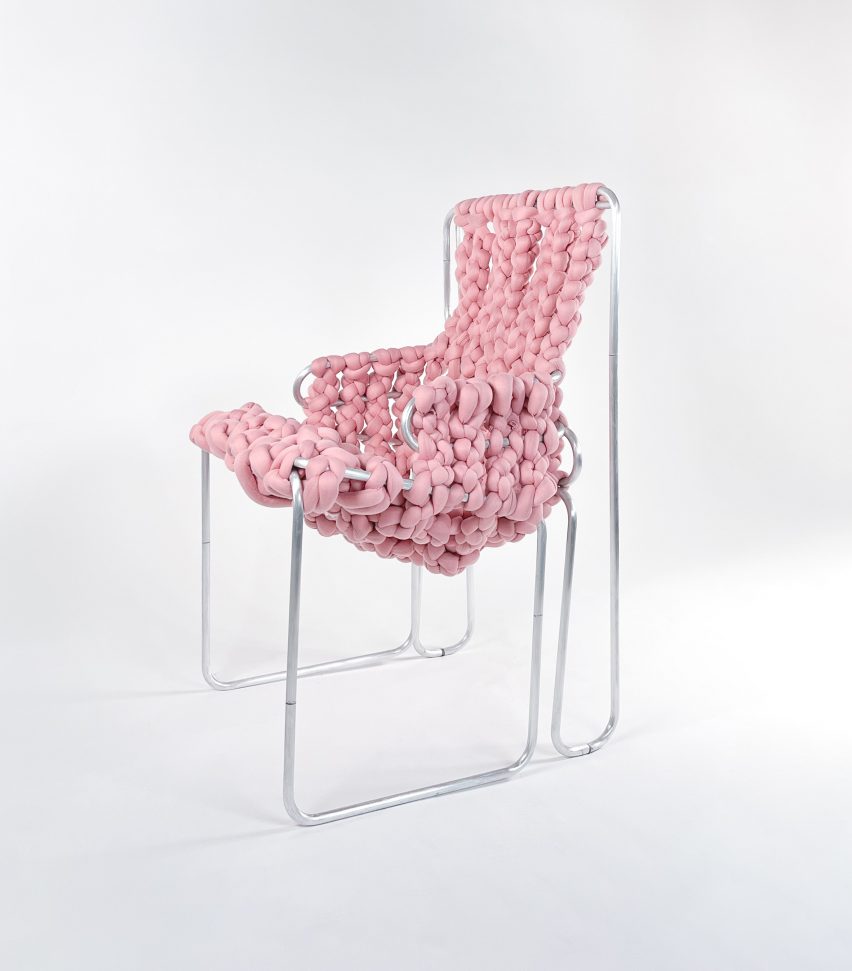
The students each took a different approach to answering the question, and the results featured a number of complete furniture pieces and components.
Masters student María Risueño Dominguez developed a furniture component based on longevity. Her research on furniture consumption and interviews with people involved in the furniture industry resulted in a concept called La Junta – a cast-aluminium joint with multiple different inserts shaped to fit a variety of components.
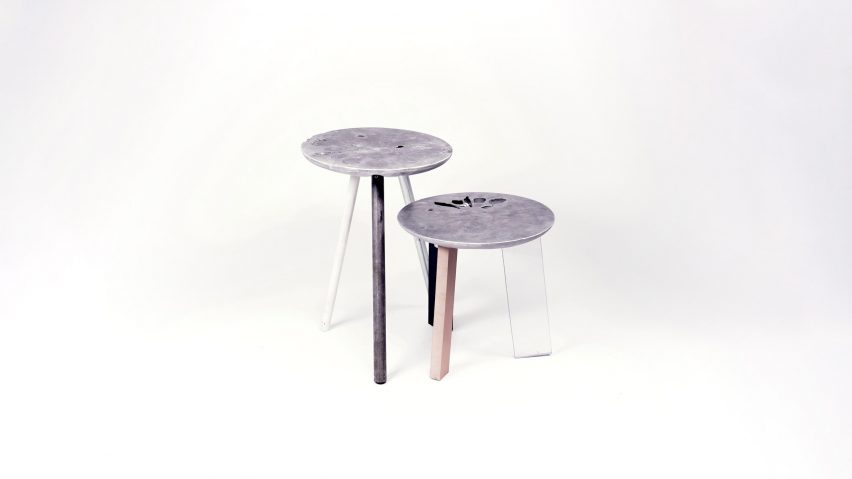
Other designers took a materials-focused approach when addressing the prompt.
Amelia Lee, a student at Wellesley taking courses at MIT, developed a product made from a single sheet of recycled HDPE. Modelled on a rocking chair, the piece can be turned on its side to function as a table.
"This chair can last through childhood, from crawling around it to being able to turn it over and play with it," said Lee.
Zain Karsan took a different approach by aiming to improve metal 3D printing technology for the frames of his chairs.
"This process is an alternative to the slow process rates of traditional metal additive manufacturing wherein molten material is dispensed at high speed in a bed of granular media," said Karsan. "A series of chair typologies are presented as a proof of concept to explore form and joinery."
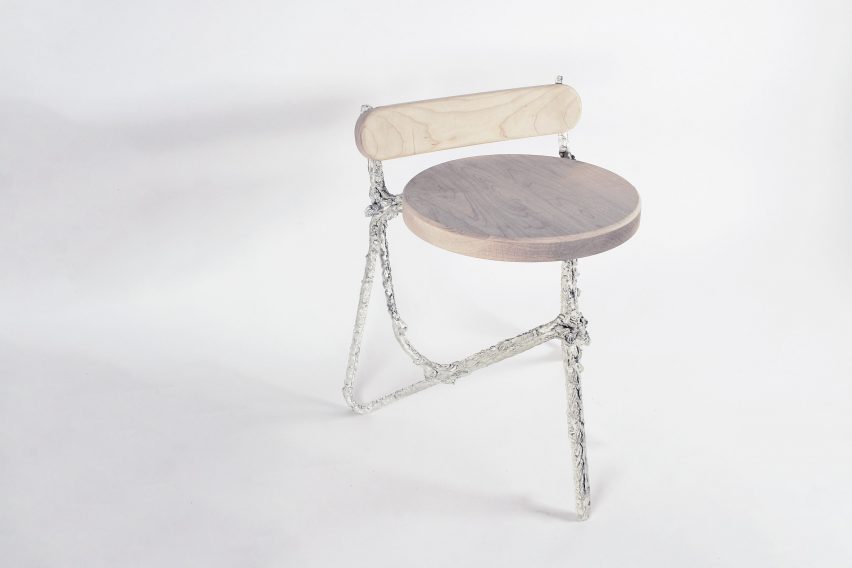
Faith Jones wanted to create a product that did not sacrifice comfort in a search for sustainability. Her ReWoven chair is designed
with an aluminium frame and a recycled cotton sling, weaving the fabric around the aluminium skeleton in a way that would allow for the removal and replacement of the cotton.
Finally, designer Jo Pierre came up with a product aimed at the changes that will likely come as cities grow and become denser. Called Enhanced Privacy, the product is a plastic partition designed for domestic spaces. The hanging sheet of plastic can be filled with water in order to block sound and diffuse light.
The students' projects were exhibited at Emeco House, the company's event space in Los Angeles in a converted 1940s sewing shop.
Other exhibitions that push the boundaries of sustainability and novel materials include one in Mexico in collaboration with Space10 with five uses for biomaterials.
MIT has released a number of conceptual designs addressing sustainability including a project that tests the capability of tree forks as load-bearing elements in architectural projects.
The photography is courtesy of MIT.
Project credits:
MIT: Jeremy Bilotti (Lecturer, Course Author), Skylar Tibbits (Director of Undergraduate
Design), MIT Department of Architecture.
Emeco: Jaye Buchbinder (Head of Sustainability, course lectures and reviews), Gregg
Buchbinder (Chairman, course reviews).
Exhibition design: Jeremy Bilotti, Jaye Buchbinder, Skylar Tibbits.
Students: María Risueño Dominguez, Faith Jones, Zain Karsan, Amelia Lee, Jo Pierre.
Course Support: Lavender Tessmer (Teaching Assistant), Gerard Patawaran
(Photography), Bill McKenna (Fabrication Support)